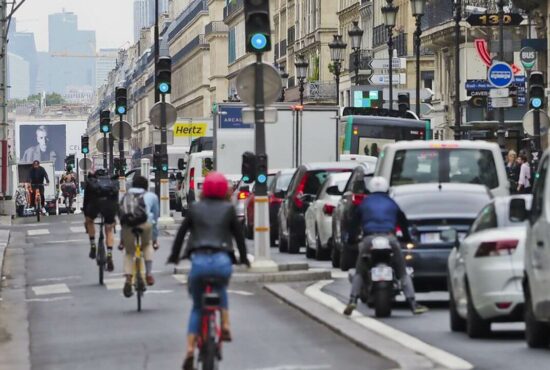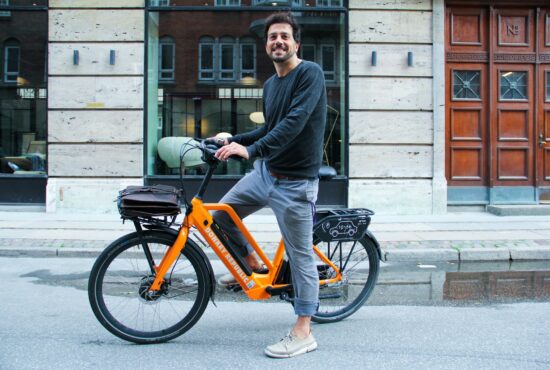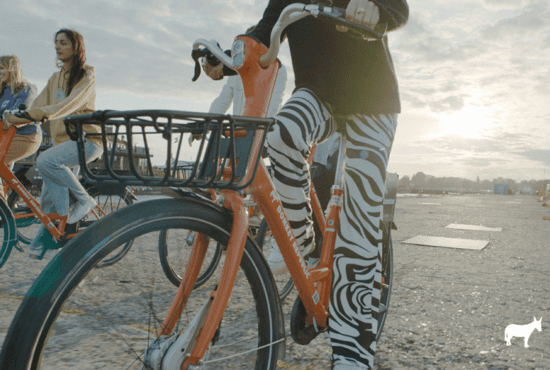Mobility refers to how we move and stay connected, yes. But mobility is not just about getting from one place to another; it is about being able to do so safely, efficiently and comfortably. While cities are competing with each other to be the most attractive – using public marketing and economic facilities – urban mobility has become one of the key criteria in the trendy rankings “The best cities to live in Europe”. The Economist’s Global Liveability Index defined the city’s infrastructure, which includes the quality of its roads, public and alternative transportation, as one of the top five criteria in the selection.
This shows the importance that citizens attach to their mobility, having understood that moving towards a more sustainable future means re-thinking how we transport ourselves. To do so, bike-sharing is undoubtedly the vehicle for a sustainable shift from car to bike in metropolitan areas, as demonstrated by a British study in which 55% of bike-share users said that the experience was the catalyst for getting back in the saddle. Cars won’t probably be replaced entirely but bike-oriented investments is one of the solutions for inner cities, together with public transport, especially for commuters or visitors coming from outside of the cities for their first and last mile solution.
The end of car focus policies
For several decades, cars have been the preferred means of transport all over the planet, from the Netherlands to China and Latin America. However, while traveling by car continued to increase during the 1990s, this mode of transport has stagnated or even declined over the past ten years, especially in cities. It is not just a small decline we have seen, in inner cities we have now seen a significant downward trend in using private cars as the preferred method of travel.

This analysis is particularly relevant in the most urbanized areas: since the late 2000s, the use of personal cars in city centers has fallen sharply in favor of alternative modes such as greener transportation (bikes), public transport or even car-sharing. Economic and public factors have played a large role in evolving regulations and shifting priorities in urban planning but more importantly, social pressure seen around the world has caused just as big an impact. We have seen the development of car-focused areas into more pedestrian-focused, giving more safe spaces and freedom to people to move around in their cities. Considering these development points, the mobility market is welcoming more players, giving the private car a lower share of the market compared to the past.
Shared mobility, the future of transportation
The future of transportation is already here. Car sharing, carpooling, transport on demand: these few examples are only a brief overview of how new urban mobility can be driven by digital technology. Everything is done to promote a model shift. Car sharing has found its place in the shared mobility market in many cities. Accessing instead of owning: that’s the new economy we are entering, largely supported by Gen Z.
However, the question of flexibility also arises when we talk about car-pooling offers: many users prefer to keep control of their journey. Car sharing and pooling however do not answer the problems of the critical mass because they require a high density of supply. Citizen participation and community building through happenings, open discussions or exhibitions can help local governments take this diversity of needs into account in their mobility policies and plans, to ensure that they set the right priorities and make mobility safe and accessible for all. In this regard, urban cycling pops as a legitimate option that fits all these criteria.
Wanna participate in the future of shared mobility? Join our crowdfunding campaign!
Welcome to the “all-bike era”
More and more of us use bicycles to get around in our cities. It’s convenient, it’s affordable and it’s sustainable. On the political side, state subsidies, urban development, bicycle lanes, and many national or local actions are being carried out to encourage the use of bicycles. The model shift towards biking, like in Copenhagen with +30% of workers commuting by bike every day, will certainly improve the quality of the urban landscape, reduce traffic noise, alleviate congestion and enhance physical well-being. The efforts – and budget – allocated to relevant infrastructures make it possible today to reach an exceptional satisfaction rate: in the Danish capital, 97% of Copenhageners are satisfied with the cycling conditions! (source: VisitCopenhagen)

With its disruption in all sectors of society, the Covid-19 pandemic has accelerated the desire to find collective-based solutions throughout society, especially in the mobility area. It is therefore not surprising that the practice of cycling increased by 87% compared to the average for the pre-pandemic period (source: European Union), which has become a widely used means of transport during the decontamination period. Cycling as a leisure activity on weekends was also on the rise with up to an increase of 64% in some cities! (source: European Union)
Putting bike-sharing systems in the heart of multimodality transport networks
In Europe, almost 60% of bike-sharing systems are located in inter-communal groupings of more than 500,000 inhabitants. (source: European Cyclist Federation) This means that a significant part of the population still does not have access to bike-sharing systems, including in large cities that do not always have a station within a 10-minute walk. In some cities, the implementation of shared bikes in the outskirts and the “Greater metropole” – which includes neighboring municipalities – could allow up to 35% of the inhabitants to make short daily trips, mainly between home and work.
We could easily imagine an interconnected network with other transport infrastructures (trains, metro, bus, etc.) where the bike-sharing system could get implemented. The beauty of the bike-sharing system remains to be its capacity to create stations – physical or virtual – with the public transport network around the main hubs located near train stations, to complement the existing offer. Why is it a key? Because it appears as a solution for the most critical legs of a trip, the “first and last mile”.
To address the concern that is linked to the lack of predictability when it comes to bike-share systems – to provide riders with a bike that is available and in good condition, at the right time, in the right place – is the key challenge for operators and providers. Well, that is exactly what we, at Donkey Republic, are constantly improving on, through our local approach and our fleet management data tracking system. We have no doubts that bike-sharing should be in the heart of multimodality in the cities that they are deployed in.
That’s why in the Netherlands (Amsterdam, Rotterdam, Den Haag, Dordrecht and more places) for instance, citizens can purchase one of our bike memberships not only via our mobile but also through other public transport planners. This kind of partnership is a great example of how to fill this gap and provide equitable and widespread access to mobility in all areas, urban and suburban. By making a bike-share an inherent part of the public transport system, we create a door to door experience.
Last but not least, did you know that each bicycle trip represents a benefit of 3 euros for society? (source: University of Dresden and Donkey Republic) It is time to accelerate the development of bike-sharing systems in mid-sized cities, particularly in terms of reducing public health costs, reducing traffic and emissions, and freeing up space, in order to make its use universal and more inclusive. As a citizen, you can contribute to the change by joining our crowdfunding campaign right now!






